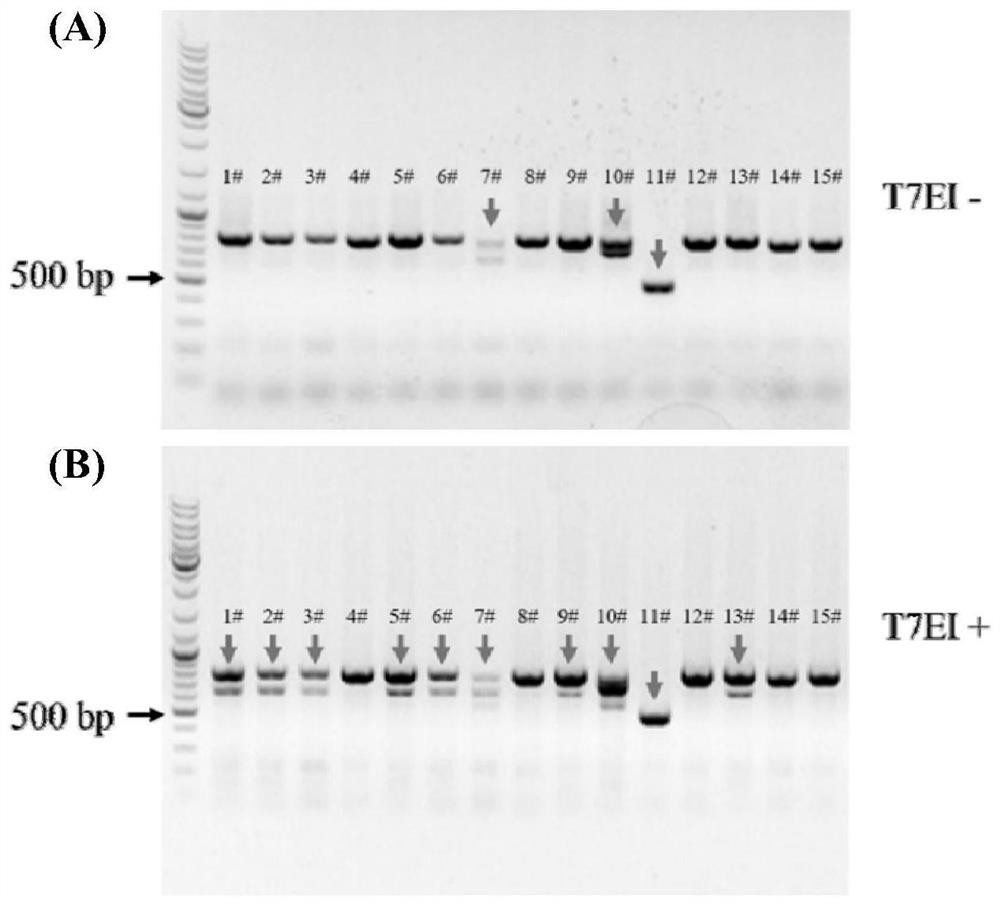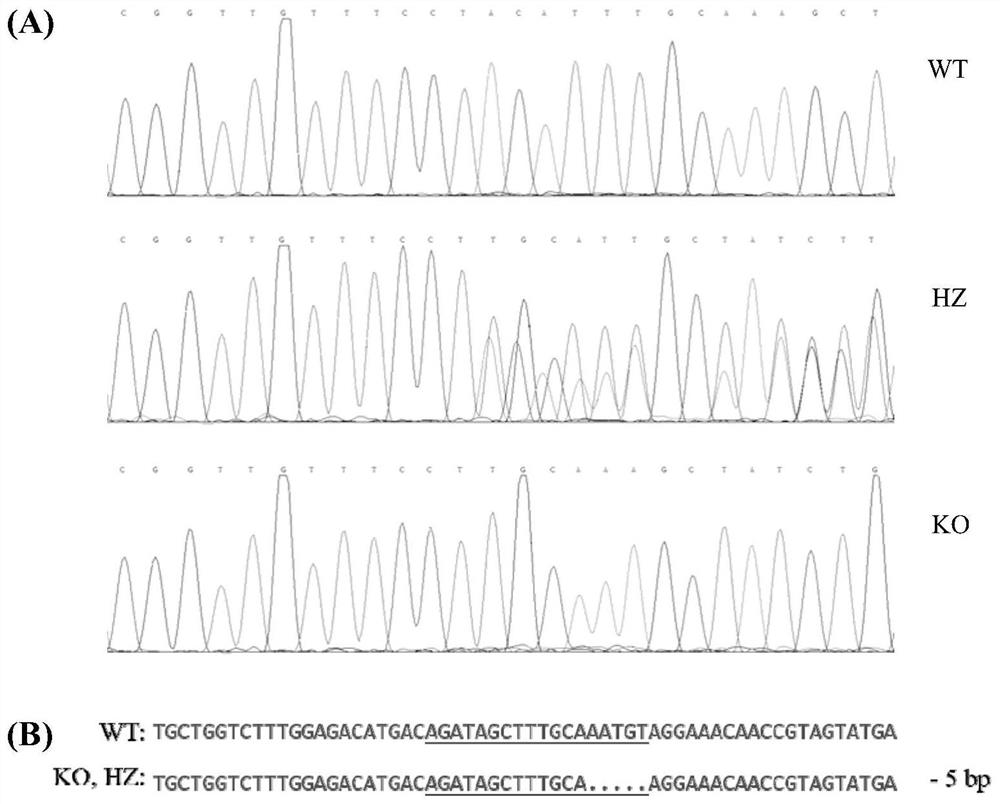A method and application of mdr1a/1b double gene knockout
A gene knockout and dual gene technology, applied in the field of biomedicine, can solve the problem of late mice in the knockout rat model, and achieve the effects of low cost, large blood volume and simple operation.
- Summary
- Abstract
- Description
- Claims
- Application Information
AI Technical Summary
Problems solved by technology
Method used
Image
Examples
Embodiment 1
[0055] Example 1 Selection of Mdr1a and Mdr1b targets
[0056] The Mdr1a and Mdr1b gene sequences of rat (Rattus norvegicus (Norway rat)) were found in the NCBI database, respectively, and then the start codon and stop codon of the gene were found, and the exon region was marked. Because the first two exons of Mdr1a and Mdr1b genes are relatively short (the number of bases is less than 70bp), the target site is selected on the third exon. The third exon sequences of the two genes were entered into the online target prediction website successively, and two targets with a length of 18 bp were obtained.
[0057] Among them, the online target prediction website is http: / / zifit.partners.org / ZiFiT / ChoiceMenu.aspx; Mdr1a gene target sequence is 5'-AGATAGCTTTGCAAATGT-3' (SEQ ID NO.1); Mdr1b gene target sequence It is 5'-CCTCCTGATGCTGGTGTT-3' (SEQ ID NO. 2).
Embodiment 2
[0058] Example 2 Synthesis and extraction of sgRNA
[0059]First, an Oligo fragment with a length of 60 bp was synthesized, including the sequence of the knockout target and the T7 promoter; then, using the Oligo fragment as a template, a complete sgRNA double-stranded template with a length of 130 bp was synthesized by overlapping PCR reaction. The sgRNA double-stranded template was extracted and separated by the method of phenol-chloroform extraction; finally, the sgRNA double-stranded template was transcribed in vitro with the T7 in vitro transcription kit, and the transcription product was extracted and separated by the method of phenol-chloroform extraction to obtain sgRNA.
[0060] Among them, the sequence of Oligo fragment containing Mdr1a gene knockout target is 5'-GATCACTAATACGACTCACTATAGG AGATAGCTTTGCAAATGT GTTTTAGAGCTAGAAAT-3' (SEQ ID NO. 3); Oligo fragment sequence containing Mdr1b gene knockout target is 5'-GATCACTAATACGACTCACTATAGG CCTCCTGATGCTGGTGTT GTTTTAGAGC...
Embodiment 3
[0061] Example 3 Co-injection of sgRNA and Cas9 mRNA and embryo transfer
[0062] (1) Preparation of pseudopregnant mice. Select robust, 8-week-old male SD rats for sterilization, and then select robust, 7-8-week-old female SD rats to mate with the above sterilized male rats. After mating, females will show signs of pregnancy, which are the desired pseudopregnant mice.
[0063] (2) Collection and microinjection of fertilized eggs. Robust, 6-7 week old female SD rats were selected for superovulation and then mated with robust, normally fertile male rats. The next day of mating, the female mice were sacrificed, and the fertilized eggs were taken for use. Before microinjection, collect the fertilized eggs in embryo medium at 37 °C CO. 2 After culturing in an incubator for 3-4 hours, the sgRNAs of Mdr1a and Mdr1b were mixed with Cas9 mRNA and injected into the cytoplasm of fertilized eggs. Among them, the concentration of both sgRNAs was 25ng / mL, and the concentration of Cas9...
PUM
 Login to View More
Login to View More Abstract
Description
Claims
Application Information
 Login to View More
Login to View More - R&D
- Intellectual Property
- Life Sciences
- Materials
- Tech Scout
- Unparalleled Data Quality
- Higher Quality Content
- 60% Fewer Hallucinations
Browse by: Latest US Patents, China's latest patents, Technical Efficacy Thesaurus, Application Domain, Technology Topic, Popular Technical Reports.
© 2025 PatSnap. All rights reserved.Legal|Privacy policy|Modern Slavery Act Transparency Statement|Sitemap|About US| Contact US: help@patsnap.com



